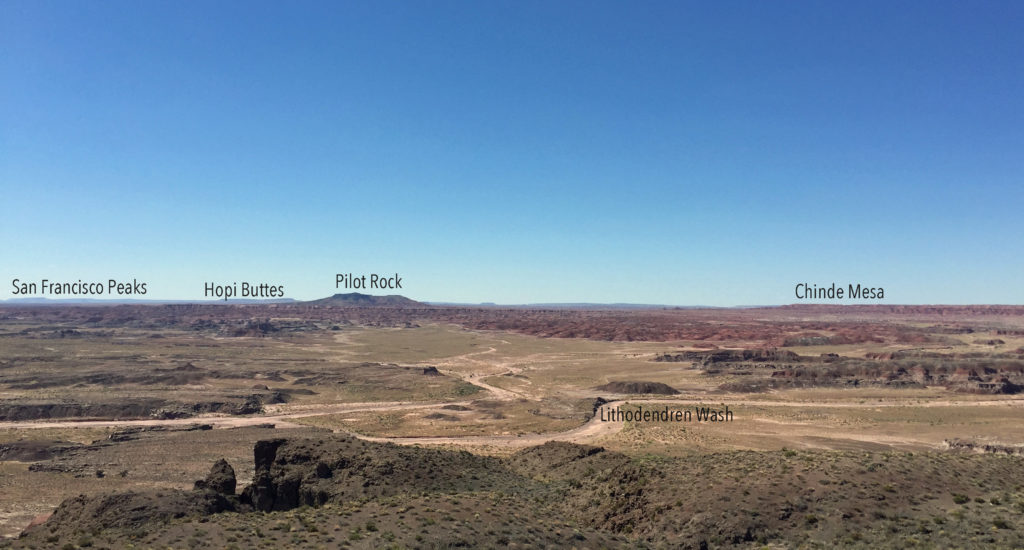
I am thrilled to be living in the Southwest! It was a long time goal and I am always charmed by the beauty and diversity of this part of the country. I am happy to share some of my travels and discoveries with you, my dear reader.
Just off of I-40 in northern Arizona is the Painted Desert and Petrified Forest National Park. First we will examine the Painted Desert and then next week I will post some information and photos about the Petrified Forest.
Now for a geology lesson….don’t moan! You need to know what you are looking at besides the pretty pictures. The national park actually encompasses just a small part of the Painted Desert as it extends over 7,500 square miles across northeastern Arizona, in what looks something like an upside down comma, stretching from around Holbrook to Tuba City, Arizona. The sandstone and mudstone layers are known as the Chinle Formation which were deposited from 227-205 million years ago during the late Triassic Period. These deposits were then buried, uplifted and finally eroded into the badland topography that I photographed.
I will go into more detail about the forces of nature that created this beautiful and breathtaking scenery in my next post.




Beautiful, mostly cloudless days and clear air allow for brilliant photos and endless beauty. Many of the landmarks noted on the next photo are within the Petrified Forest National Wilderness Area. Remember, while it might be hot and dry in the summer, snow is no stranger to this area and your view could change dramatically!

The San Francisco Peaks are about 100 miles away and the Lithodendren (Stone Tree) Wash is about a mile from this outlook. It is amazing how far you can see!
While this area is now well-known, it has nearly alway been well-traveled. Migrants, military, Spanish explorers, Ice Age hunters, travelers and traders have passed through the area of the Painted Desert for centuries. This route skirts the Rocky Mountains and allows a direct path from the eastern states to the western states. In more recent history, it has been part of the Beale Wagon Road (1857), Overland Mail (1876), the Transcontinental Railroad (1883), the Old Trails Highway (1912), the Mother Road or Route 66 (1926) and as of 1958, Interstate 40.
Finally, this area saw the dawn of the age of the dinosaurs in the late Triassic period. There is a wonderful display contained within the Rainbow Forest Welcome Center at the south end of the park.

Postosuchus, a crocodile like “pre-dinosaur”.

There was abundant plant life here as the area historically was not unlike the rainforests of Costa Rica.

There were also early bird-like dinosaurs present and on display.
See you next week for the other side of the National Park!
